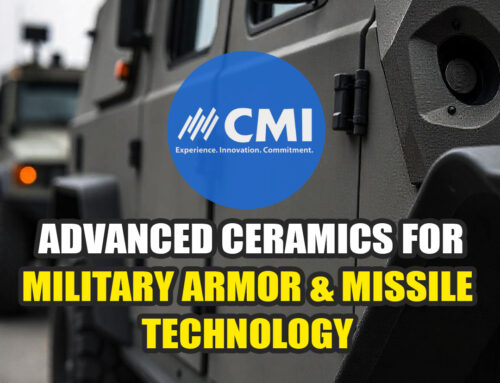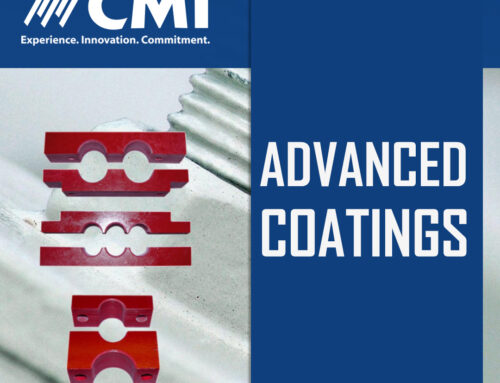Steel comes in various types, each with unique properties and uses. Cold-rolled steel stands out for its smooth finish and precise dimensions. It’s made by processing hot-rolled steel at room temperature, which changes its physical properties.

Cold-rolled steel is stronger and harder than hot-rolled steel due to the manufacturing process. This makes it ideal for products that need tight tolerances and good surface finishes. The cold rolling process also improves the steel’s tensile strength and yield strength.
Different steel types suit different needs. Hot-rolled steel is cheaper and works well for large structural components. Stainless steel resists corrosion better than both cold-rolled and hot-rolled carbon steels. Choosing the right type depends on the project’s requirements for strength, finish, and cost.
Key Takeaways
- Cold-rolled steel offers better strength and surface finish than hot-rolled steel
- The choice of steel type depends on the specific project needs and budget
- Each steel type has pros and cons in terms of cost, strength, and corrosion resistance
Differences In Manufacturing Processes

Hot rolled steel and cold rolled steel have distinct manufacturing processes. Hot rolling happens at high temperatures above 1500°F (815°C). The steel is heated and passed through rollers.
Cold rolling starts with hot rolled steel. It’s then cooled and rolled again at room temperature. This extra step makes the steel stronger and gives it a smoother surface.
Hot rolling creates a scaled surface on the steel. The high heat can cause some deformation. Cold rolling, on the other hand, produces tighter tolerances and better dimensional accuracy.
The cold rolling process puts pressure on the steel. This compression increases its strength. It also refines the grain structure of the metal.
Hot rolled steel cools after rolling. This can lead to slight shape changes. Cold rolled steel keeps its shape better due to the room temperature process.
Cold rolled steel often goes through more steps. These can include grinding or polishing. These extra steps help create a very smooth, precise finish.
Both processes have their uses. Hot rolling works well for large structural parts. Cold rolling is better for smaller parts that need to be very precise.
Comparative Rust Resistance

Steel comes in various types, each with different levels of rust resistance. Cold-rolled steel offers better rust and corrosion resistance than other steel types.
The rust resistance of steel depends on its composition and processing. Cold-rolled steel often has a smoother surface, which can help prevent moisture buildup and reduce corrosion risk.
Hot-rolled steel may have more surface imperfections that can trap moisture and lead to faster rusting. However, both types can benefit from protective coatings to enhance corrosion resistance.
Stainless steel contains chromium, giving it excellent rust resistance. It forms a protective oxide layer when exposed to oxygen, making it highly corrosion-resistant.
Here’s a simple comparison of rust resistance for common steel types:
- Stainless Steel: Excellent
- Cold-Rolled Steel: Good
- Hot-Rolled Steel: Fair
- Carbon Steel: Poor
The environment plays a big role in steel corrosion. Coastal areas with salt air or industrial settings with chemicals can accelerate rusting in all steel types.
Proper maintenance and protective measures can significantly improve the rust resistance of any steel type. Regular cleaning, painting, and applying rust inhibitors can extend the life of steel products.
Applications And Environmental Considerations

Cold-rolled steel finds use in many industries due to its unique properties. The automotive industry often chooses cold-rolled steel for body panels and structural components. Its smooth finish and tight tolerances make it ideal for these applications.
Furniture makers value cold-rolled steel for its aesthetically pleasing appearance. The material’s clean look works well in modern designs. Cold-rolled steel is also common in appliances like refrigerators and washing machines.
For structural applications, hot-rolled steel is often preferred. It’s used in beams, I-beams, and railroad tracks. These components don’t require the precise dimensions of cold-rolled steel.
Environmental factors play a role in steel choice. Cold rolling uses less energy than hot rolling, potentially reducing carbon emissions. However, the extra processing steps for cold-rolled steel can offset this advantage.
Recycling is important for both steel types. Steel is highly recyclable, helping to conserve resources. This applies to cold-rolled and hot-rolled varieties alike.
Cost-Effectiveness In Different Industries
Cold-rolled steel offers unique advantages in various industries. Its smooth finish and tight tolerances make it ideal for aerospace applications.
In the manufacturing industry, cold-rolled steel’s precision can lead to less waste. This helps offset its higher initial cost.
Hot-rolled steel is often more cost-effective for large-scale projects. Its lower production costs make it budget-friendly for construction.
The automotive sector balances both types. Cold-rolled steel is used for body panels, while hot-rolled steel is used for chassis components.
Here’s a quick comparison of cost-effectiveness:
| Industry | Cold-Rolled Steel | Hot-Rolled Steel |
| Aerospace | More cost-effective | Less suitable |
| Manufacturing | Higher initial cost, less waste | Lower cost, more waste |
| Construction | Less cost-effective | More cost-effective |
| Automotive | Used for specific parts | Used for structural elements |
Frequently Asked Questions
Cold-rolled steel differs from other steel types in several key aspects. These differences impact its properties, applications, and performance in various industries.
What are the key differences in properties between cold-rolled and hot-rolled steel?
Cold-rolled steel has a smoother surface finish and tighter tolerances than hot-rolled steel. It is also stronger and harder due to the cold working process.
Hot-rolled steel has a rougher surface with mill scale. It is more malleable and has less internal stress than cold-rolled steel.
How do the strength characteristics vary between cold-rolled and hot-rolled steel?
Cold-rolled steel has higher yield strength and tensile strength compared to hot-rolled steel. This is due to work hardening during the cold rolling process.
Hot-rolled steel has lower strength but better stress tolerance. It is more suitable for applications requiring high ductility.
In what applications is cold-rolled steel typically used?
Cold-rolled steel is often used in applications requiring precise dimensions and smooth surfaces. These include:
- Automotive body panels
- Appliance casings
- Furniture
- Precision parts in machinery
What distinguishes cold-rolled steel from stainless steel?
Cold-rolled steel is carbon steel that has undergone cold working. Stainless steel contains chromium for corrosion resistance.
Cold-rolled steel is more affordable and easier to work with. Stainless steel offers superior corrosion resistance and is used in more demanding environments.
What makes cold-rolled steel grades different from one another?
Cold-rolled steel grades vary in carbon content and other alloying elements. These differences affect:
- Strength
- Hardness
- Weldability
- Formability
Higher carbon grades are stronger but less malleable.
How does cold-rolled steel compare to mild steel in composition and usage?
Cold-rolled steel can be made from mild steel through the cold rolling process. The cold rolling process increases the strength and hardness of the steel.
Mild steel is more ductile and more accessible to weld. On the other hand, cold-rolled steel offers a better surface finish and dimensional accuracy.
Both are widely used in construction and manufacturing, but cold-rolled steel is preferred for applications requiring tighter tolerances.
Advancements and Trends in 3D IC Technology
3D IC technology is advancing rapidly, significantly improving performance, power efficiency, and miniaturization. This section discusses key developments, including heterogeneous integration, breaking scaling limits of traditional 2D ICs, and future research directions.
Heterogeneous Integration
Heterogeneous integration combines different types of semiconductor devices and materials in one package. By integrating logic, memory, and other components on multiple silicon wafers, 3D ICs achieve higher performance and lower power consumption. For instance, nano crossbar phase-switching and graphene NEMS electrostatic discharge protection devices are noteworthy advancements in this space Advances in 3D Heterogeneous Structures and Integration for Future ICs.
The use of through-silicon vias (TSVs) is also critical. These allow vertical electrical connections through silicon wafers, further enhancing data transfer rates and reducing energy use. Additionally, integration at the die level supports compact vertical inductors, which enhances power efficiency and performance.
Scaling Beyond Traditional 2D Limits
3D IC technology overcomes the limitations of Moore’s Law by stacking semiconductor devices vertically. This approach significantly reduces interconnect lengths and increases communication density, leading to faster data transfer rates and lower latency Three-Dimensional Integrated Circuit (3D IC) Key Technology: Through Silicon Vias.
With wide I/O memory, data transfer between layers is faster and more efficient, supporting high-performance computing applications. Vertical stacking’s smaller form factor allows for more functional density within the same physical footprint, enabling continued advancements in device miniaturization.
Future Directions in 3D IC Research
Future research in 3D ICs is looking into integrating electronics and photonics for even higher data transfer capabilities. A promising direction is adding a photonics I/O layer to achieve terabit-per-second-scale connectivity, which can significantly enhance overall performance Building 3D integrated circuits with electronics and photonics.
Researchers are also exploring new materials to advance 3D IC technology further. For example, two-dimensional (2D) materials like graphene could offer unique properties, such as increased flexibility and conductivity, supporting future IC innovations 3D integration of 2D electronics.
Additional investigations include developing more reliable and efficient thermal management solutions to handle the increased heat generation in densely packed 3D ICs. Such advances will help maintain high performance while ensuring device longevity and stability.
Frequently Asked Questions
3D integrated circuits (ICs) offer higher performance and efficiency than traditional ICs. They are used in various high-tech applications and have unique design and packaging challenges.
What are the primary applications of 3D integrated circuits?
3D ICs are primarily used in advanced consumer electronics, telecommunications, and high-performance computing. These ICs enhance devices such as smartphones, tablets, data centers, and AI systems by providing faster processing and increased functionality.
How does 3D IC packaging differ from traditional IC packaging?
3D IC packaging involves stacking multiple chips vertically and connecting them through vertical interconnects. In contrast, traditional ICs are laid out on a single layer. This vertical stacking allows for reduced footprint and improved performance.
Can you list the advantages and disadvantages of 3D integrated circuits?
Advantages:
- Higher performance and faster data transfer
- Reduced power consumption
- Smaller footprint
Disadvantages:
- Higher manufacturing cost
- Increased complexity in design and testing
- Thermal management challenges
What are the design challenges associated with 3D integrated circuits?
Designing 3D ICs involves dealing with thermal management, ensuring proper alignment of stacked layers, and managing power distribution. Designers also need to address signal integrity and reduce potential interference between layers.
How does monolithic 3D integration improve upon standard 3D IC integration techniques?
Monolithic 3D integration builds multiple active silicon layers with vertical interconnects on a single chip. This integration method provides even higher density and performance than traditional 3D IC stacking techniques, allowing for more efficient use of space and resources.
In what way do 2D and 3D integrated circuits differ in terms of structure and performance?
2D ICs have all their components laid out on a single plane, leading to larger physical size and slower interconnects. On the other hand, 3D ICs stack multiple layers vertically, leading to smaller size, higher speed, and greater functionality. This vertical structure allows for more compact and efficient designs.






